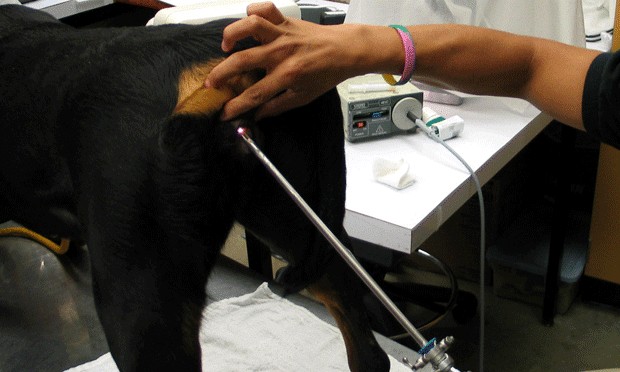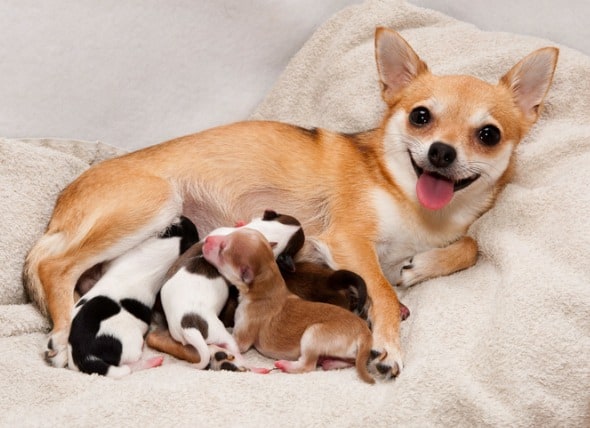Artificial insemination (AI) has opened a new world of possibilities with regards to canine breeding. While natural breeding is nature’s best breeding method, AI is becoming the order of the day. It offers benefits that are absent in natural mating. The biggest one is the fact that breeding can happen anywhere on the planet without transporting dogs to mate. If you are a breeder hoping to go this route, there’s no reason not to. Aslong as you have the right information about what you are about to get yourself into, you will do well. To help you, we have detailed a guide on the number of times to inseminate a dog.
What Is Artificial Insemination?

AI has been in use for centuries mostly in cattle. Dog breeders were shy to utilize the process at first but the trend has caught on the canine world now. This was fueled by the increased demand for artificial insemination and advances in semen technology.Simply put, this is the process of breeding dogs without mating by introducing semen into the dam’s vagina when she’s ovulating to facilitate conception.
AI is all about choosing the right male to harvest semen from. He should have the desired personality, intelligence, and other traits. Once he has been chosen, a female teaser is brought near him. If there’s no female on heat, a cotton swab with the scent of a female in estrus can be used to get the male excited. As he tries to mount a female, his penis is then redirected to an artificial vagina from where the semen is harvested.
The semen can be used immediately, chilled in the refrigerator, or frozen. To use it, a syringe containing the semen is inserted into the female dog’s cervix when she’s ovulating. Insemination can also happen surgically or through an extended trans-cervical endoscope.
Benefits of AI
AI is beneficial as it brings convenience to breeders looking to diversify their genetic pool. Back in the day, a female would have had to be transported across borders to mate with the desired stud. Now, semen from a male dog from any part of the universe can be harvested, stored, and transported. Widening the genetic pool is beneficial especially for dog breeds that are in small numbers in certain geographical locations.
AI also allows breeders to boost kennel genetics. They have access to a plethora of options, even semen from dogs that have passed away. The procedure also makes it possible to evaluate semen for abnormalities and fertility. Plus, it prevents sexually transmitted diseases.
Dog Artificial Insemination Success Rate

According to an article on BBC news, AI’s success rate is over 50%. This is an average success rate but the actual number depends on the quality of the semen. Fresh semen is essentially the best. If an experienced and skilled breeder does the procedure, the success rate is approximately 80%. This drops to 59% – 80% if the semen is chilled and 52% -60% if it is frozen. Storing semen can damage the sperm’s viability and ultimately the outcome of breeding. Frozen semen goes through processing before being mixed with a preservative and then frozen using liquid nitrogen. This process can compromise its quality a lot.
With AI, timing is everything. The fertile window period is rather slim. You have only a few days to breed the dog. For fresh semen, AI is best done 2 days after ovulation while frozen semen is administered 3-4 days after ovulation. There are several ways of determining whether the dog is ovulating or not. The most common is progesterone testing which is done every two days to get precise results.
Concerning how many times to inseminate a dog, there are different schools of thought. According to this study published on PubMed, two inseminations will get you better results than one insemination. The research involved 36 bitches that were inseminated with frozen semen. Some were inseminated once and others twice at 1-2-day intervals. The average conception rate was 67% with a litter size of 6.4. The ones that were inseminated once gave a conception rate of 64% while those that were inseminated twice gave a rate of 69%.
Revival Animal Health recommends inseminating a dam every other day until the estrus period passes. The estrus period starts four days before ovulation and sticks around until three days after ovulation. That gives a total of 7 days of possible breeding. If you do AI every other day, you are looking at 3-4 inseminations at a time.
Warning
The number of times to inseminate the dog largely depends on the type of insemination. If you are inserting semen into the dam using your hand, you can afford to do the procedure every other day. However, if you are going the surgical route, you can only do it once at a time. Surgery involves sedation and cutting open the dog. Unless you don’t care about the well-being of the pup, you don’t want to subject her to an invasive procedure more than once at a time. Transcervical insemination is best done once as well as it involves sedation.
AI is a remarkable breeding technique in the canine world. It can transform your world as a breeder in so many ways. As long as you play by the rules, you will have an amazing experience with it.
Image source: 1, 2
Related Posts:
How to Stop a Male Dog from Smelling a Female in Heat
What Does A Dog In Heat Smell Like?
As an Amazon Associate, we may receive a small commission from qualifying purchases but at no extra cost to you. Learn more. Amazon and the Amazon logo are trademarks of Amazon.com, Inc, or its affiliates.

